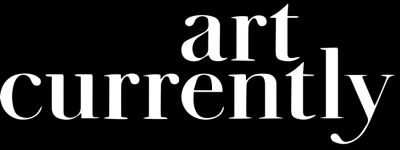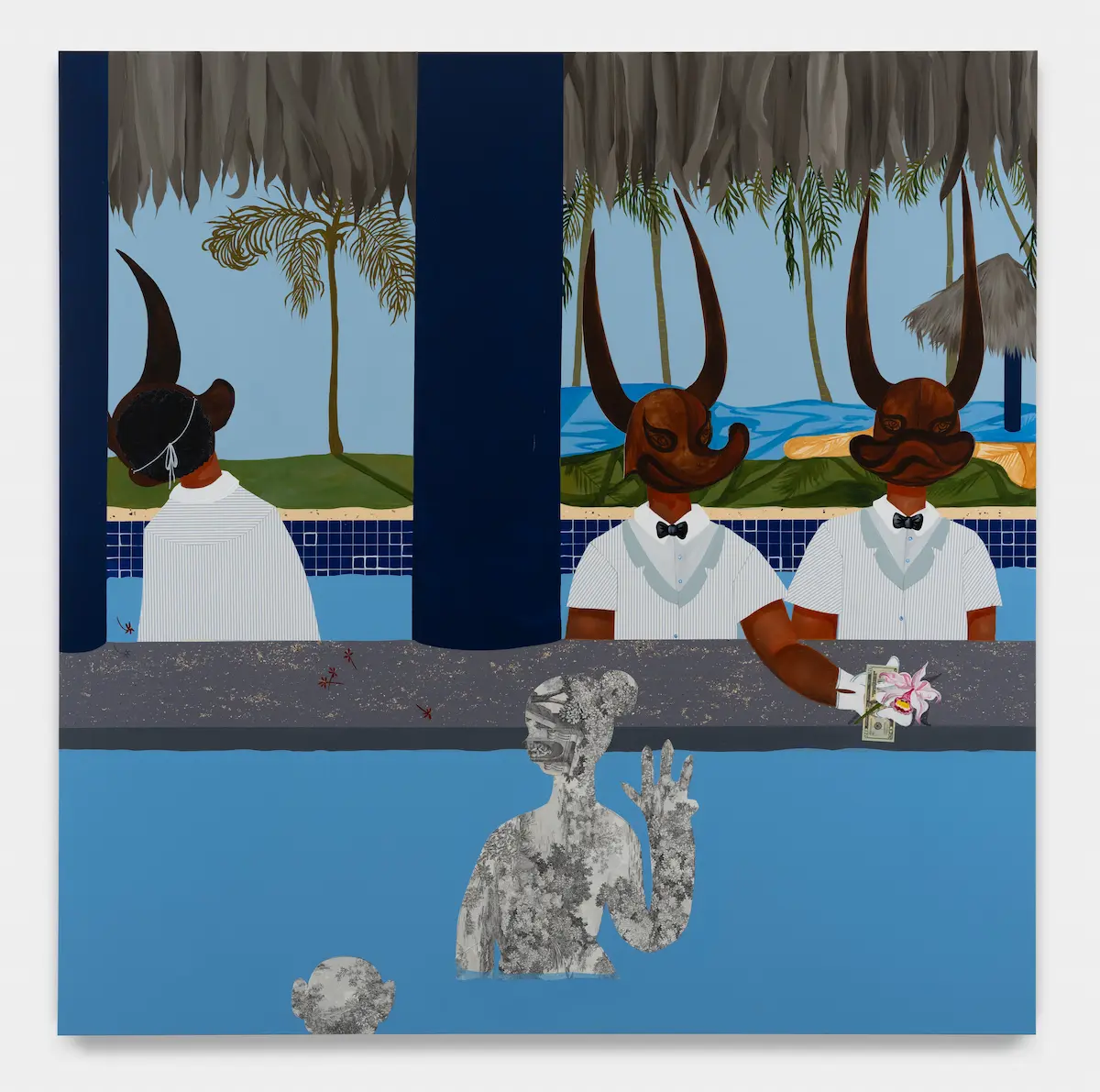From Lunch Break Visits to Solo Show, Bony Ramirez’s Homecoming Exhibition at The Newark Museum of Art
Upon entry to the second floor of The Newark Museum of Art, visitors are greeted with a large taxidermy calf with metal chains interlaced around its body, serving as the inaugural piece within Bony Ramirez's latest solo exhibition, "Cattleya." This is followed by a series of eight entirely new works hung across pink painted walls, showing his signature dreamlike portraiture conventions on wooden panels, two sculptures and a site-specific installation.
Cattleya
Paired with the chained calf, a striking painting by fellow Dominican late artist Freddy Rodríguez “El Papa Verde” emerges, shaped like a papal cape with a splatter of blood at the center, pointing to the Catholic Church’s role in colonization and the abuse of indigenous and enslaved populations. This intentional pairing serves as a poignant commentary on historical exploitation and Ramirez’s study of this seen throughout his oeuvre. In addition to Rodríguez’s work, the exhibition showcases three pieces from the museum collection - one featuring Freddy, and two sculptures by Melvin Edwards, an artist admired by Ramirez.
Similarly, Ramirez’s artworks look at contemporary exploitation, drawing parallels between past and present injustices experienced first-hand. The chained calf, serving as a self-portrait, symbolizes Ramirez’s previous grueling experiences working in construction before dedicating himself to art full-time. “Cattleya” borrows its title from Martin Heade’s tropical "Cattleya Orchid with Two Hummingbirds" (ca. 1880s), that Ramirez reminisces on discovering during his frequent trips to the museum as a student at Essex County college. His fascination for epiphytes orchid types, and how easily they can thrive in their natural environments or are exoticized in the U.S., this correlation blends well with the artist’s metaphoric comparison to colonization.
The Dominican-born and New Jersey based self-taught artist communicates his childhood memories through crafting surreal and dreamlike portraitures. Historical figures, West African art, and contemporary American art educates his use of Caribbean motifs to reimagine resistance to colonialism and tourism.
"Cattleya”, part of the museum’s Global Contemporary Series is on view for a year (through March 9, 2025). artcurrently caught up with Ramirez about his homecoming show, in an exclusive interview.
Visitors are firstly greeted with an installation of metal chains around a calf, seemingly being asphyxiated. Can you talk about your intentions behind this work in relation (if it is) to the rest of the body of work?
My intention with this piece was to include a more personal perspective into the show. I aimed to highlight how the lingering effects of colonialism persist in various forms today, particularly through the labor and exploitation of the working class.
This show centers around your admiration and the beauty of Martin Heade’s tropical Cattleya Orchid with Two Hummingbirds. Do you recall the first time you learned about this painting or coming across it?
The NMOA was the first museum I visited in the USA. The first time I came across this painting was during my first visit to the museum in 2014. Attracted by its depiction of tropical scenery and the orchid itself, which resonated deeply with my sense of home, I felt an immediate connection to the painting.
I understand there was a sense of freedom while putting together this show; which I think in part, was a reason why you took the opportunity to explore sculpture making. The coconut portal in particular was exciting to see. Could you tell us more about why you chose to include this painting? And will we be seeing more of this in the future?
Sculpture making has always been integral to my practice, and for this exhibition, I seized the opportunity to delve deeper into it, resulting in pieces like the "coconut portal". I aimed for sculptures that would both complement the paintings in the show and hold their own presence. Utilizing materials I typically feature in my paintings added an extra layer of excitement to the process. My sculpture practice is still evolving and developing and I hope to continue this exploration further.
This show is a homecoming in many ways. Did you manifest this?
In many ways, the show feels like a homecoming for me. Visiting the NMOA for the first time was a pivotal moment, sparking my passion for art within an institutional context. Having my first solo show in this museum holds special significance, as it symbolizes a full circle journey from my lunch break visits to showcasing my work within its walls.
Lastly, will we see a continuation of these works or sculptural works in the near future?
While these works were created specifically for this exhibition, I have learned a lot and gathered a lot of new knowledge while creating this body of work, and I hope to apply it in upcoming projects.



